The Activity Analysis & Intervention (AAI) Project

Dear Knowledge Creators,
My name is Oliver Ding. I am the founder of Activity Analysis Center. This webpage aims to introduce a new project for professional consultants who want to utilize Activity-centered theoretical knowledge for consulting activity.
On August 5, 2022, Activity Analysis Center was relaunched as a knowledge center for curating knowledge resources about Activity Theory and related social practice theories and creating new knowledge frameworks.
From August 2022 to August 2023, I focused on 1) applying the Project Engagement approach to several domains such as Knowledge Engagement, Thematic Engagement, and Product Engagement, 2) developing the Anticipatory Activity System (AAS) framework and writing a book (draft) about it, and 3) studying creative work and editing four books (drafts) about Creative Life.
I also edited a book (draft) titled Appropriating Activity Theory to reflect on my engaging journey with Activity Theory from 2015 to 2023.
The journey was only about my creative life.
How can I share Activity Theory and other theoretical resources with you and other creative knowledge workers?
In August 2023, I met some friends from various professional domains. I realized it was time to launch the Activity Analysis & Intervention (AAI) project.
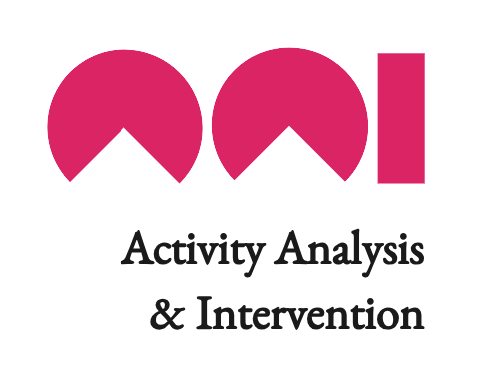
The Activity Analysis & Intervention (AAI) Project aims to turn Activity-centered theoretical knowledge into applied practical knowledge.
The project considers three types of roles:
- Clients
- Consultants
- Coaches
It was designed in two types of programs:
- First-order Analysis
- Second-order Analysis
If you are a Client, you only need to read the section about First-order Analysis below.
If you are a Consultant, you should read all sections below.
First-order Analysis: The Client-Consultant Circle
First-order Analysis aims to utilize Activity-centered knowledge to solve clients' situational problems or discover new opportunities.
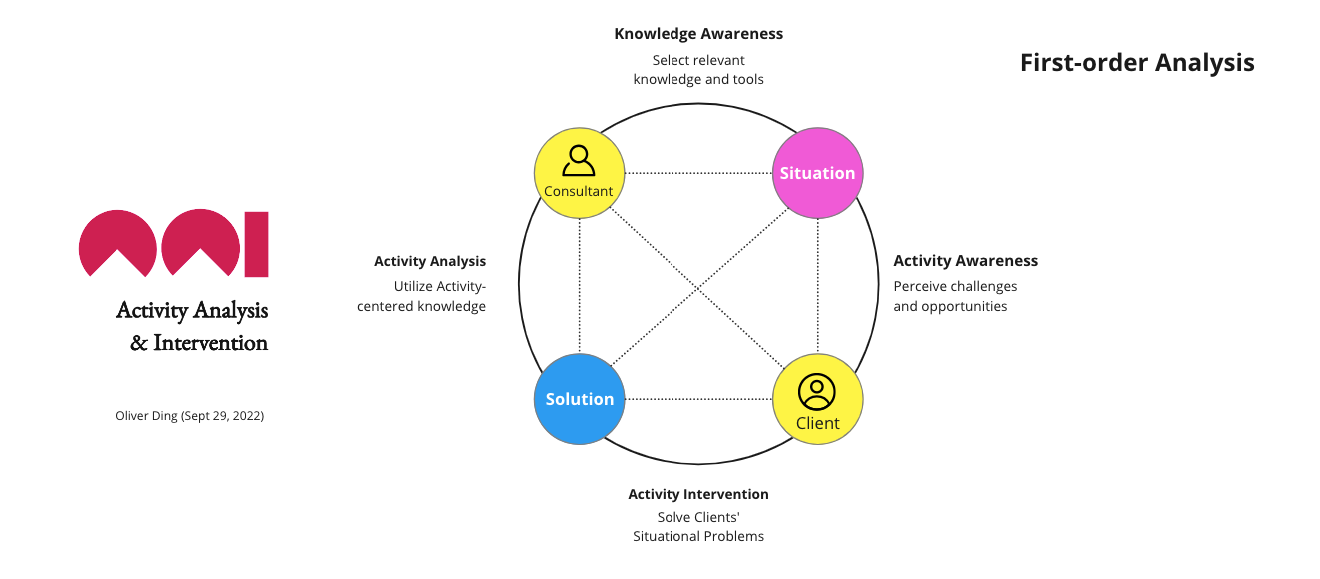
What do Clients do?
- Activity Awareness: Perceive challenges and opportunities
- Activity Intervention: Solve situational problems or capture potential opportunities.
What do Consultants do?
- Knowledge Awareness: Select relevant knowledge and tools
- Activity Analysis: Utilize Activity-centered knowledge
The Client-Consultant Circle is a collaborative activity setting with long-term communication around a four-stage service program.
1) Activity Awareness (Client): 3 days to 1 week
2) Knowledge Awareness (Consultant): 3 days to 1 week
3) Activity Analysis (Consultant + Client): 1 week to 3 weeks
4) Activity Intervention (Client + Consultant): 3 weeks to 3 months
We use Cycles to manage the Circle and the Program. A Circle may require 5 weeks to 5 months. If the client's challenge is complex, it may take several cycles to achieve the goal.
In order to make small wins, it's better to take small Cycles as initial projects.
Second-order Analysis: The Consultant-Coach Circle
Second-order Analysis aims to utilize Activity-centered theoretical knowledge to improve Consultants' personal knowledge.
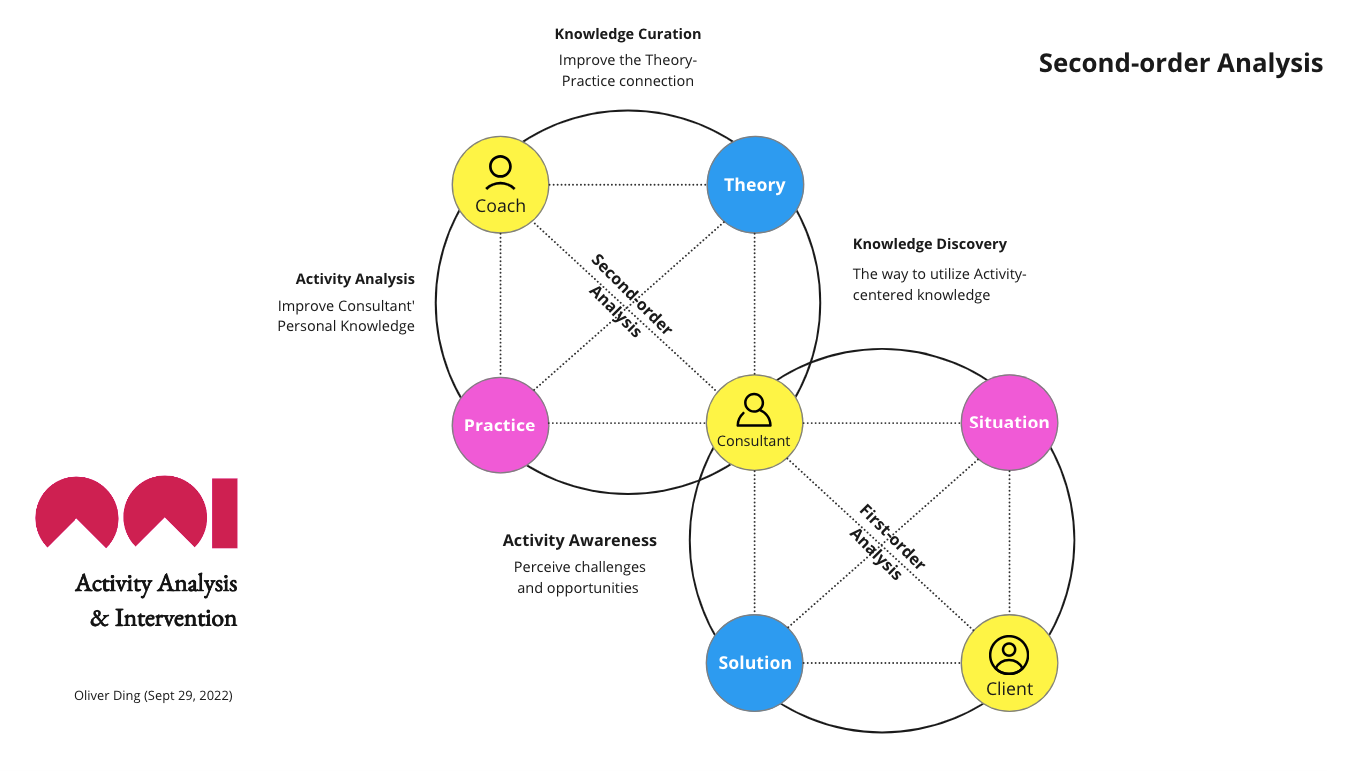
What do Consultants do?
- Activity Awareness: Perceive challenges and opportunities
- Knowledge Discovery: Pay attention to the way to utilize Activity-centered knowledge
What do Coaches do?
- Activity Analysis: Improve Consultants' personal knowledge
- Knowledge Curation: Improve the Theory-Practice connection
The Consultant-Coach Circle is a collaborative activity setting with long-term communication around a three-stage service program.
1) Activity Awareness (Consultant): 3 days to 1 week
2) Knowledge Discovery (Consultant): 3 days to 1 week
3) Activity Analysis (Consultant + Coach): 1 week to 3 weeks
We use Cycles to manage the Circle and the Program. A Circle may require 2 weeks to 1 month.
In addition, the Coach also works on the fourth stage:
4) Knowledge Curation (Coach): 1 week to 3 weeks
The Coach may work on case studies by reflecting on the Consultant's real project. The outcome should be published on the website of Activity Analysis Center.
Building A Knowledge Community
Activity Analysis Center was designed as a three-phase project. On May 6, 2022, I used the diagram below to develop a model for building a knowledge enterprise.
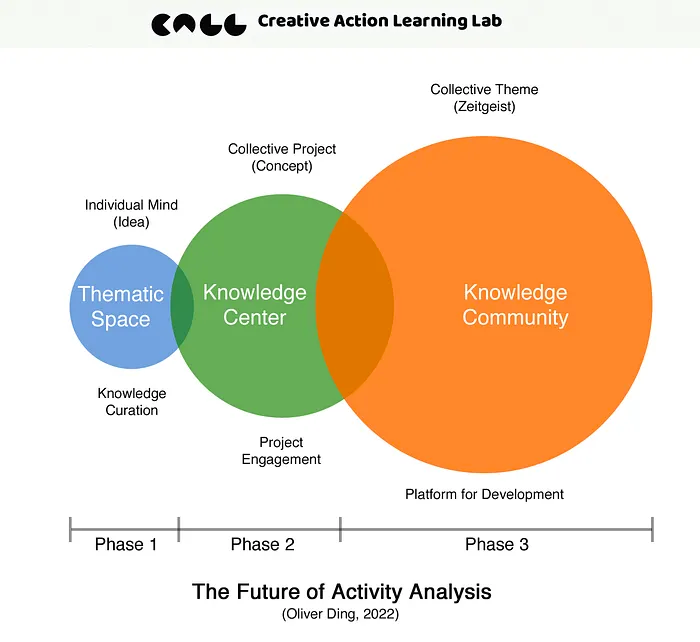
The model is inspired by Project-oriented Activity Theory. Each phase refers to a focus. The three-phase development is inspired by the following diagram which is one of a series of diagrams in the book.
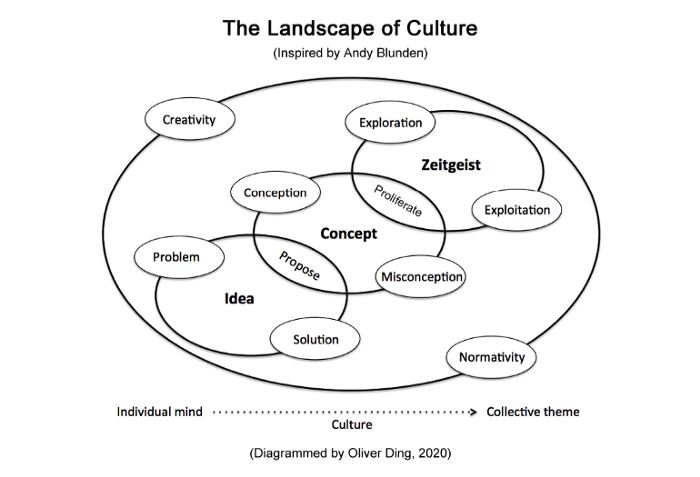
I used the above diagram to explain the concept of “culture” from the perspective of Project-oriented Activity Theory. It zooms out to a large view that connects the Individual mind (Idea) and Collective theme (Zeitgeist) through Collective Projects (Concept).
The Activity Analysis & Intervention (AAI) Project is a strategic project for phase 3: building a knowledge community.
What's the uniqueness of the AAI community?
The Theory-Practice Connection
The mission behind Activity Analysis Center is to connect THEORY and PRACTICE.
The Theory-Practice Gap is an important issue in a wide range of disciplines including education, organization learning and development, community building, academic development, enterprise R&D, professional service firms (PSFs), etc.
If we can find a good solution to close the Theory-Practice Gap, then we can improve existing social systems of knowledge production, knowledge application, and knowledge management at the individual level and the collective level.
I have been thinking and working on developing such a solution for many years.
As a serial creator and a lifelong thinker, I am passionate about intellectual development and life reflection. Initially, I was influenced by Chris Argyris’ Action Science and Donald Schön’s Theory in Practice and The Reflective Practitioner. In 2014, I started learning Ecological Psychology, Activity Theory, and other theoretical approaches.
Activity Theory and related social practices are useful theoretical resources for building the Theory-Practice connection.
For example, the "Behavior Change" theme refers to a field of using theoretical knowledge to solve practical problems. Some people use "Behavior Science" as an umbrella term that refers to a variety of disciplines, including fields like psychology, sociology, and anthropology, etc.
We can roughly use the Knowledge Discovery Canvas to visualize a knowledge value chain around the "Behavior Change" theme. See the diagram below.
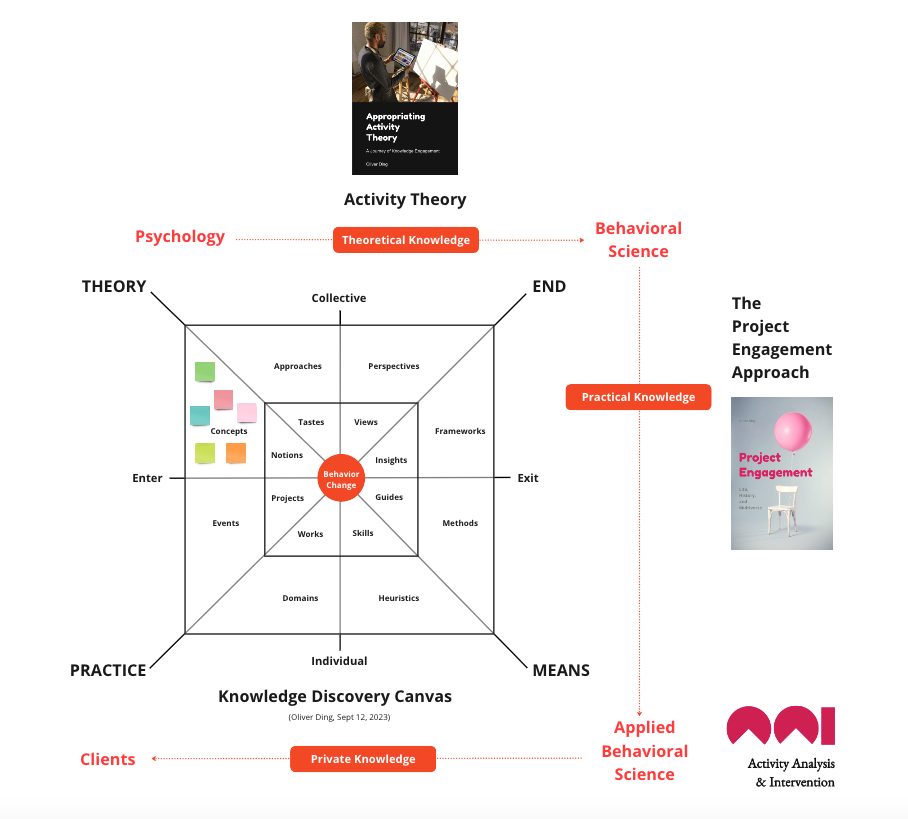
- Theoretical Knowledge: Psychology > "Behavior Science"
- Practical Knowledge: "Behavior Science" > "Applied Behavior Science"
- Private Knowledge: Consultants > Clients
Activity Theory and related social practice theories are Theoretical Knowledge.
The Project Engagement Approach and similar knowledge frameworks are Practical Knowledge.
The Activity Analysis & Intervention (AAI) project may belong to "Applied Behavioral Science".
Embrace a unique school of thought
The AAI project offers theory-based reflection to Consultants who want to improve their cognitive activities and intellectual life.
The significant benefit of participating in the AAI project is to embrace a unique school of thought, a theoretical tradition with multiple knowledge frameworks for understanding both individual and social aspects of human behavior.
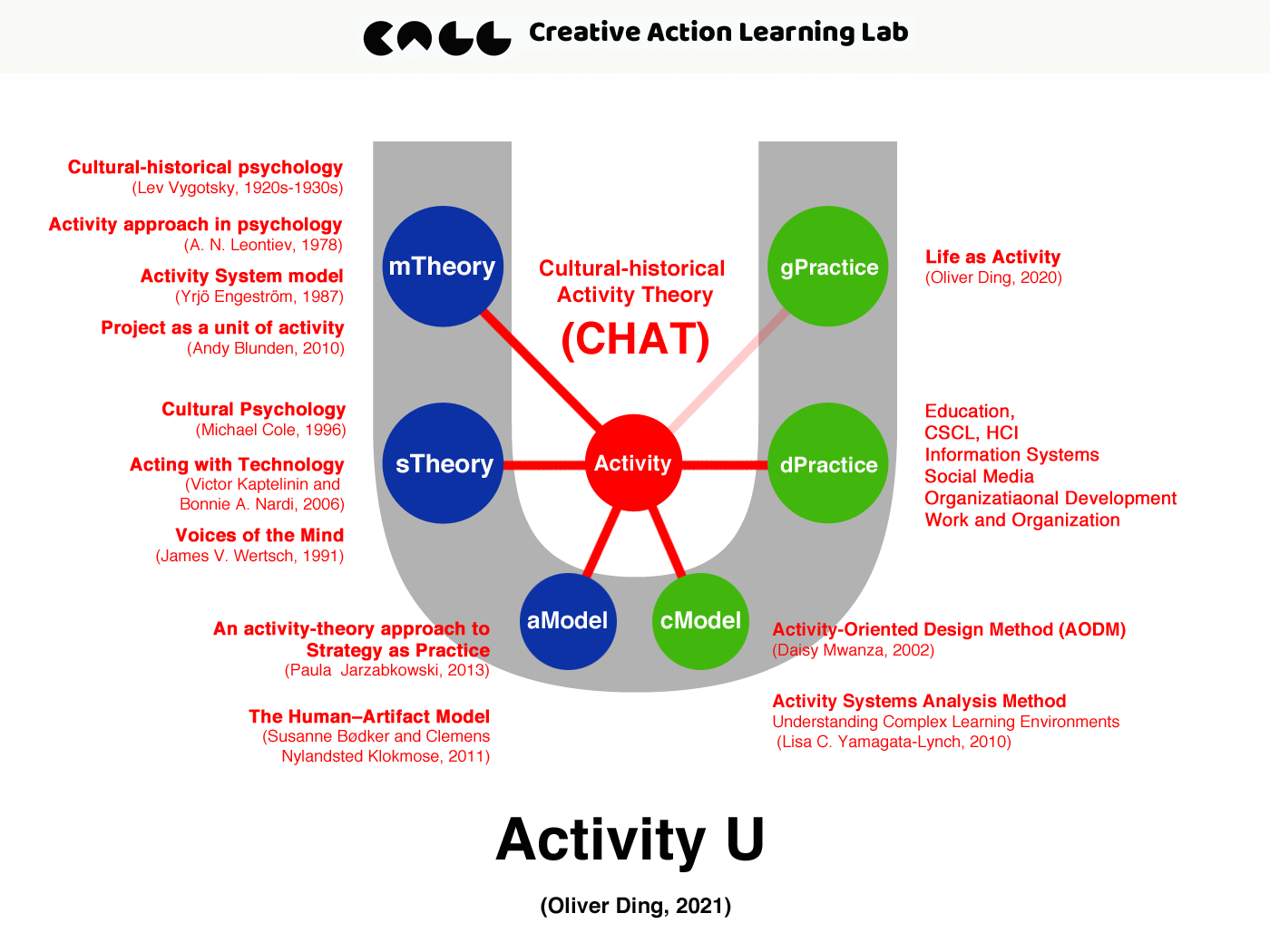
Activity Theory or the “Cultural-historical activity theory (CHAT)” is an interdisciplinary philosophical framework for studying both individual and social aspects of human behavior. Activity Theory is an established theoretical tradition with several theoretical approaches developed by different theorists. Originally, it was inspired by Russian/Soviet psychology of the 1920s and 1930s.
In the beginning, activity theory is a psychological theory about the mind and it focuses on the development of individual psychological functions. A major development of activity theory was contributed by Finnish educational researcher Yrjö Engeström who upgraded the activity theory from the individual activity level to the collective activity level with a conceptual model of “activity system” in order to apply activity theory to educational settings, organizational development and other fields (Engeström,1987).
A major development of Activity Theory during the past decade is Andy Blunden’s account “An Interdisciplinary Theory of Activity”. In order to develop the notion of “Project as a unit of Activity” as a theoretical foundation of the new interdisciplinary theory of Activity, Blunden adopts Hegel’s logic and Vygotsky’s theory about “Unit of Analysis” and “Concept” as theoretical resources. The process is documented in four books: An Interdisciplinary Theory of Activity (2010), Concepts: A Critical Approach (2012), Collaborative Projects: An Interdisciplinary Study (2014), and Hegel for Social Movements (2019).
Activity theorists and thinkers are also active in connecting traditional activity theory with other social practice theories. For example, Clay Spinuzzi worked on connecting Activity Theory and ANT (Actor-Network Theory) and applied the new framework to research the "Network" theme in enterprise practice.
Achieving a Creative Life
The potential benefit of participating in the AAI project is to turn private professional experiences into public knowledge creation.
For example, I used the basic principle of Activity Theory to guide the design of Knowledge Discovery Canvas and wrote a book (draft) about it.
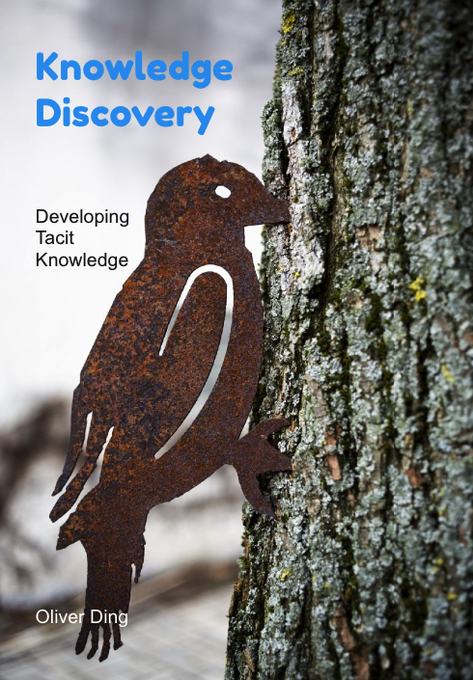
I connected Activity Theory with Anticipatory System Theory, built the Anticipatory Activity System (AAS) framework, and applied it to study Life Strategy. The outcome is a book (draft) titled Advanced Life Strategy. It also led to a new knowledge center: Life Strategy Center.
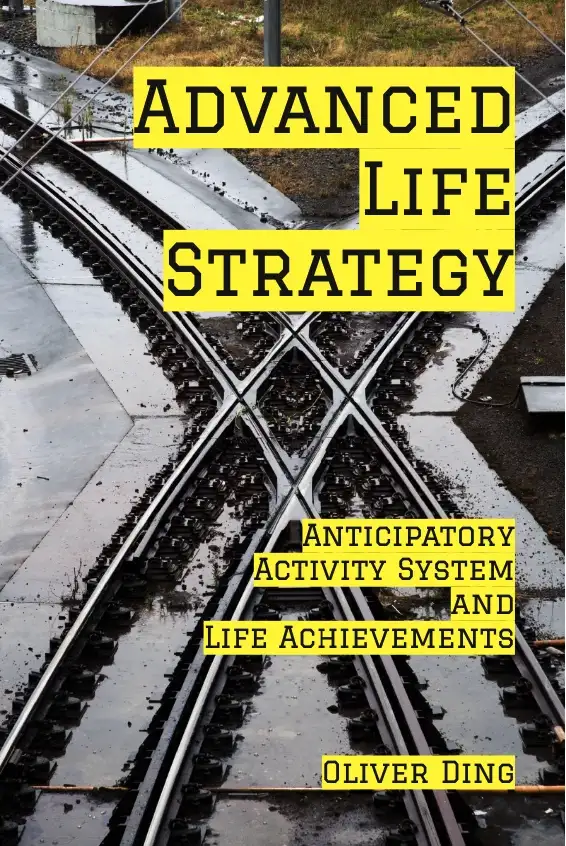
I wish you could find your primary creative theme in your professional life and develop your own knowledge enterprise.
The Activity Analysis & Intervention (AAI) project is an accelerator for you to achieve a creative life.
Want to know more?
Join the AAI project and help me test the idea. If you want to know more, contact me on Linkedin.
Best wishes,
Oliver Ding
Founder of Activity Analysis Center
Sept 29, 2023
Houston
